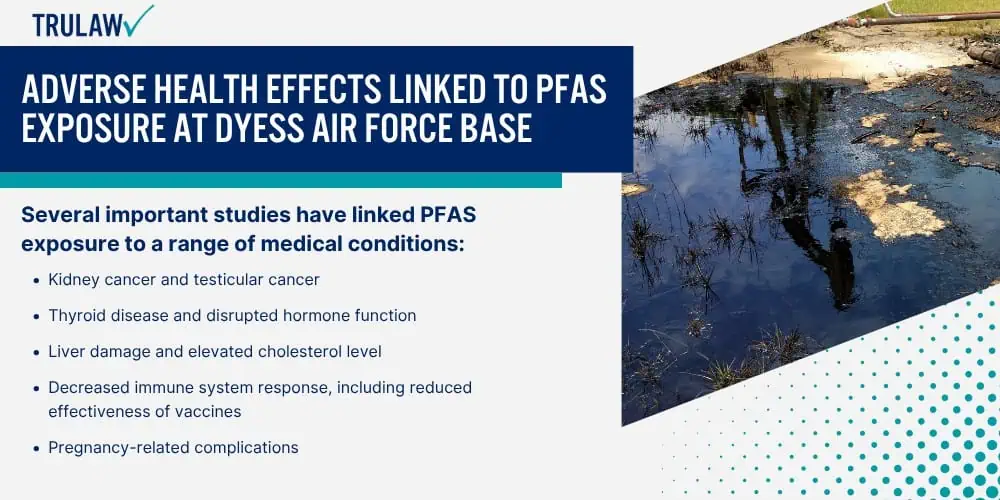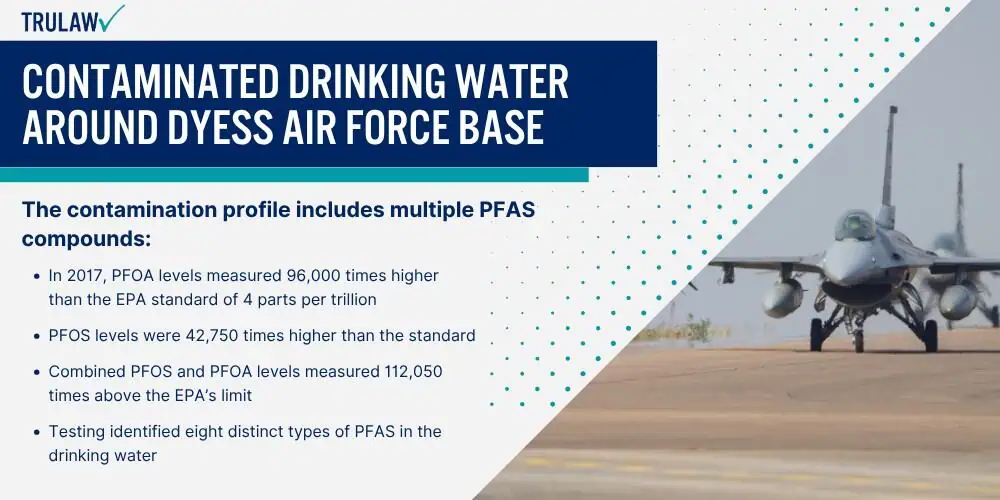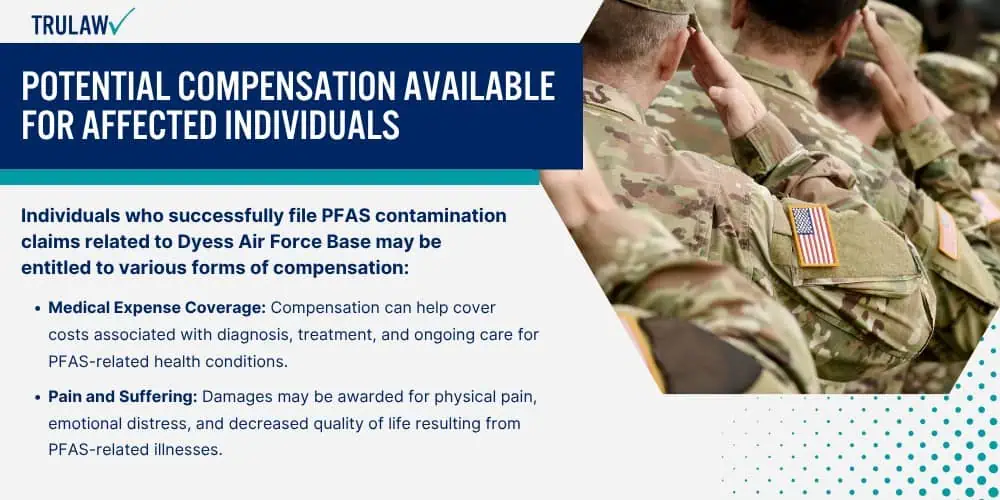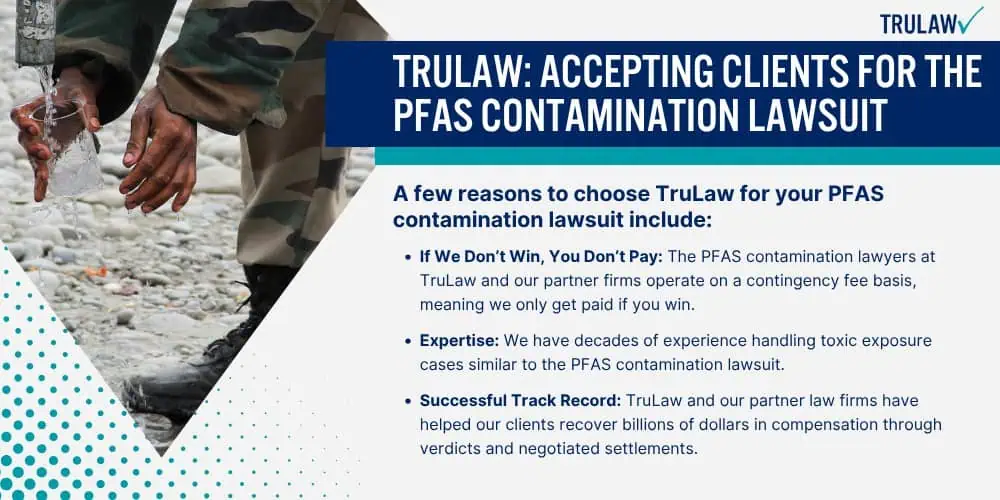Per- and polyfluoroalkyl substances (PFAS) at Dyess Air Force Base present a serious health concern for military personnel, their families, and surrounding communities.
The base has reported alarmingly high PFAS contamination levels, with measurements reaching up to 2,052,000 parts per trillion (ppt), far exceeding the Environmental Protection Agency’s (EPA) 2024 drinking water standard of 4 ppt.

The contamination at Dyess is approximately 30,000 times higher than what is considered safe for human exposure.
This extensive pollution stems primarily from decades of using aqueous film-forming foam (AFFF) for firefighting training and emergency responses.
Medical Conditions Associated with PFAS Chemicals
The accumulation of PFAS chemicals in the human body can trigger numerous adverse health outcomes, especially with prolonged exposure through contaminated drinking water.
According to research by the Environmental Protection Agency (EPA), exposure to certain levels of PFAS may lead to reproductive issues such as decreased fertility and pregnancy-induced hypertension.
Several important studies have linked PFAS exposure to a range of medical conditions:
- Kidney cancer and testicular cancer
- Thyroid disease and disrupted hormone function
- Liver damage and elevated cholesterol levels
- Decreased immune system response, including reduced effectiveness of vaccines
- Pregnancy-related complications
- Developmental delays in children
- Ulcerative colitis
Research conducted by the National Institute of Environmental Health Sciences (NIEHS) has also found connections between PFAS exposure and altered metabolism, body weight regulation, and increased risk of childhood obesity.
For military personnel and families stationed at Dyess Air Force Base, these health risks are particularly concerning due to the extremely high contamination levels present on the installation.
Scientific Evidence Supporting PFAS Health Risks
The body of scientific evidence connecting PFAS exposure to adverse health outcomes has grown substantially in recent years.
According to the Agency for Toxic Substances and Disease Registry (ATSDR), studies with animals have demonstrated that PFAS exposure can cause damage to the liver and immune system, along with low birth weight, birth defects, and delayed development.
Multiple authoritative health organizations have reviewed the scientific data regarding PFAS:
- The Centers for Disease Control and Prevention (CDC) identified PFAS as an immune hazard based on high-quality evidence
- The National Toxicology Program concluded that two types of PFAS, PFOA and PFOS, suppress antibody response
- The Environmental Protection Agency established strict drinking water standards for PFAS in April 2024
- The Agency for Toxic Substances and Disease Registry confirms links between PFAS and changes in liver enzymes, cholesterol levels, and immune function
Research from the National Cancer Institute found a link between serum PFOS levels and testicular cancer among military servicemen, especially among firefighters and those serving at bases with high PFAS contamination in water supplies.
This finding is particularly relevant to Dyess Air Force Base where PFAS levels are exceptionally high.
The scientific community continues to study these chemicals, but the weight of evidence now clearly points to meaningful health hazards from exposure.
The legal implications of these findings are substantial, with many affected individuals now pursuing claims.
Law firms are actively investigating the potential for PFAS litigation against manufacturers who may be responsible for contamination at and around military sites like Dyess Air Force Base.
For those who have suffered health effects after exposure to PFAS-contaminated water at Dyess, legal options may be available to seek compensation.







